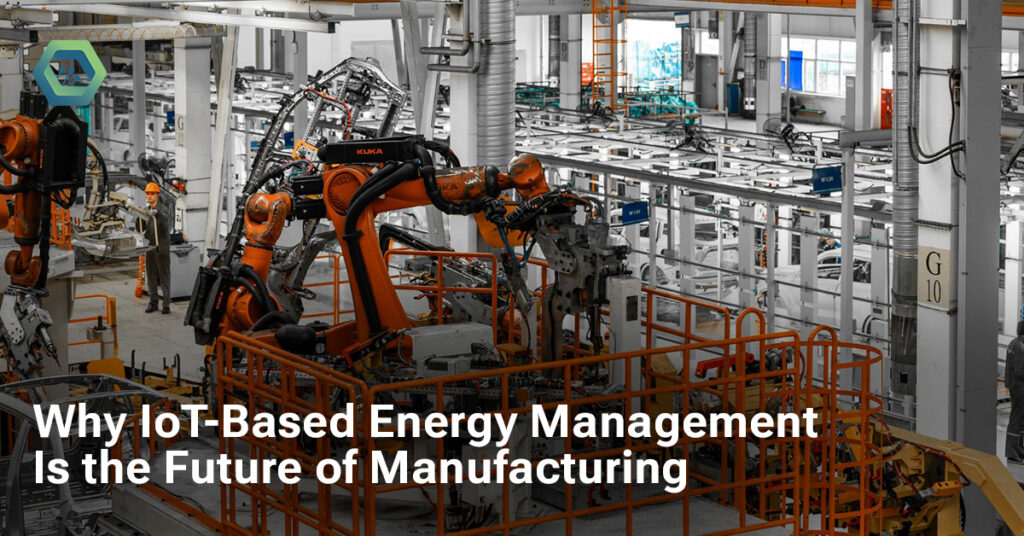Introduction
The manufacturing industry is evolving rapidly, driven by the need for efficiency, sustainability, and cost savings. One of the most transformative technologies playing a central role in this evolution is the Internet of Things (IoT). Among its many applications, IoT in energy management is becoming a game-changer. It allows manufacturers to optimize energy use, monitor consumption in real-time, reduce wastage, and move toward a more sustainable future.
In this blog, we’ll explore how IoT in energy management is reshaping manufacturing, the benefits it offers, current trends, and why adopting this technology is no longer optional but essential.
What Is IoT in Energy Management?
IoT in energy management refers to the use of smart, connected devices to track, analyze, and optimize energy consumption. Sensors, meters, and controllers are installed across manufacturing equipment and infrastructure. These devices send data to a central system or cloud platform, which then provides actionable insights for better energy decisions.
For manufacturers, this means having complete control and visibility over how energy is being used — from the production floor to lighting, HVAC systems, and more.
Why Energy Management Matters in Manufacturing
Manufacturing is one of the most energy-intensive sectors globally. High energy costs can significantly impact profit margins, especially in large-scale operations. At the same time, sustainability goals and government regulations are pushing companies to reduce their carbon footprints.
Traditional energy management methods are often manual, inefficient, and reactive. In contrast, IoT in energy management brings automation, precision, and real-time visibility, making it possible to:
- Monitor energy usage across devices and systems
- Identify inefficiencies and unusual patterns
- Automatically adjust settings based on usage trends
- Ensure compliance with energy regulations
- Predict and prevent equipment failure
Key Benefits of IoT in Energy Management
1. Real-Time Monitoring and Control
With IoT, manufacturers can track their energy consumption in real time. Smart meters and sensors continuously collect data on usage patterns, peak demand times, and equipment performance. This information allows facility managers to take immediate action to reduce consumption or shift energy loads.
2. Energy Waste Reduction
One of the biggest challenges in manufacturing is unnoticed energy waste — lights left on, machines idling, or systems running inefficiently. IoT in energy management identifies these issues instantly. Alerts and automation features help shut down or adjust systems, saving energy without affecting operations.
3. Predictive Maintenance
Energy management isn’t just about utilities; it also applies to machinery. When machines start consuming more power than usual, it can be a sign of wear or malfunction. IoT sensors detect these anomalies early, enabling maintenance teams to fix problems before they cause downtime.
4. Cost Savings
By optimizing energy usage, manufacturers can significantly lower electricity bills. The insights gained through IoT in energy management help in making smarter energy procurement decisions and avoiding penalties for exceeding demand thresholds.
5. Sustainability and Compliance
Regulatory bodies are enforcing stricter environmental standards. Implementing IoT-powered systems helps track energy-related emissions and simplifies compliance reporting. It also supports long-term sustainability goals by reducing carbon output.
Use Cases of IoT in Energy Management in Manufacturing
● Smart Lighting Systems
Automatically turn lights on/off based on occupancy or time schedules, reducing unnecessary usage.
● HVAC Optimization
IoT-based HVAC systems adjust temperature settings dynamically, improving both energy efficiency and workplace comfort.
● Machine-Level Energy Monitoring
Each piece of equipment can be monitored for energy efficiency, providing cost analysis and maintenance planning data.
● Energy Forecasting
AI-driven IoT platforms can predict future energy needs based on past usage patterns, helping manufacturers plan better and avoid energy shortages or overuse.
Latest Trends in IoT in Energy Management
● Integration with Renewable Energy
More manufacturers are integrating solar or wind energy into their systems. IoT in energy management helps manage these hybrid systems efficiently by tracking production and usage in real time.
● AI and Machine Learning Integration
Combining IoT data with AI leads to smarter predictions and automation. This allows systems to automatically make decisions for peak load management and energy distribution.
● Edge Computing
Instead of sending all data to the cloud, edge computing processes some data locally for faster response times. This is especially useful in critical energy management functions.
● Cybersecurity Focus
As more devices connect to the network, the risk of cyber threats grows. Modern energy management platforms come with built-in security protocols to protect sensitive data.
Challenges and Considerations
Despite the benefits, there are challenges to adopting IoT in energy management:
- Initial Cost: Setting up IoT infrastructure can require upfront investment in sensors, software, and training.
- Data Overload: Without the right analytics tools, the amount of data generated can become overwhelming.
- Interoperability: Legacy systems and modern IoT devices may not always communicate seamlessly.
- Security: Protecting energy data and connected devices from cyber threats requires ongoing attention.
However, these challenges can be addressed with careful planning and the right technology partners.
Why IoT in Energy Management Is the Future
As energy costs rise and sustainability becomes a priority, IoT in energy management is no longer a luxury — it’s a necessity. Manufacturers that fail to adopt these solutions risk falling behind competitors, losing profitability, and facing regulatory penalties.
The future of manufacturing lies in smart, data-driven decisions. By embracing IoT in energy management, companies can move toward a more efficient, responsible, and competitive operation.
Conclusion: Powering the Future with OmniWOT
At OmniWOT, we understand that manufacturers need reliable, scalable, and smart solutions. Our IoT platform offers powerful tools for energy monitoring, analytics, automation, and predictive maintenance. With over 100+ IoT sensors and a flexible open-cloud platform, OmniWOT enables manufacturers to gain full control over their energy usage.
Whether you’re looking to reduce costs, increase efficiency, or meet your sustainability goals, IoT in energy management is the path forward — and OmniWOT is the partner to help you get there.
Start your smart energy journey with OmniWOT today.


